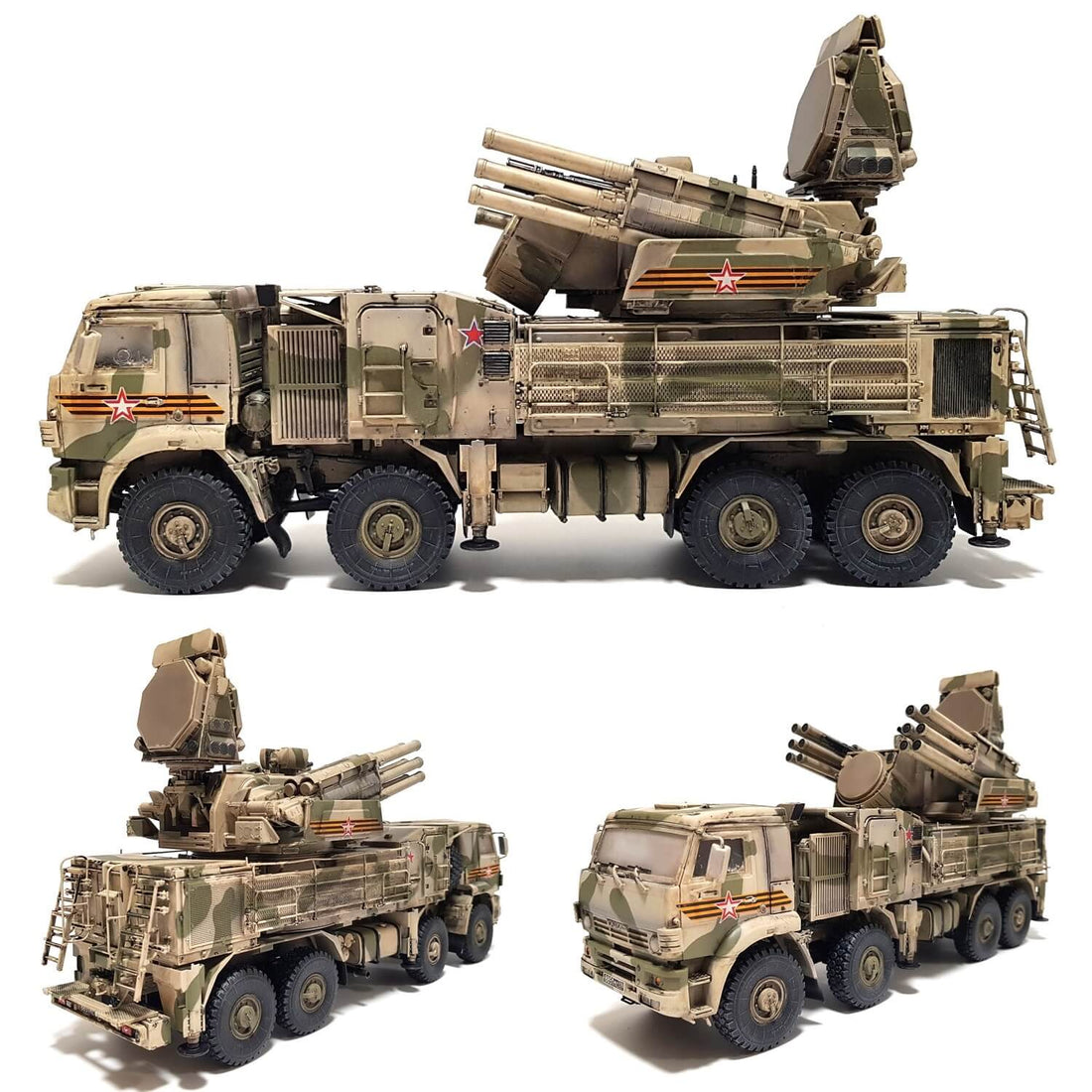
1:35 Russian PANTSIR-S1 Self-Propelled Anti-Aircraft System SA-22 GREYHOUND from ZVEZDA
Share
The Pantsir missile system is a family of self-propelled, medium-range surface-to-air missile and anti-aircraft artillery systems. Starting with the Pantsir-S1 (NATO reporting name SA-22 Greyhound) as the first version, it is produced by KBP Instrument Design Bureau of Tula, Russia. The system is a further development of 2K22 Tunguska (NATO reporting name: SA-19/SA-N-11) and uses phased array radars for both target acquisition and tracking. The Pantsir-S1 was designed to provide point air defence of military, industrial and administrative installations against aircraft, helicopters, precision munitions, cruise missiles and UAVs; and to provide additional protection to air defence units against enemy air attacks employing precision munitions, especially at low to extremely low altitudes.
The first finished version was completed in 1995 with the 1L36 radar, later another was designed. It is a short to medium range ground-based air defence system, wheeled, tracked or stationary with two to three operators. Its air defense consists of automatic anti-aircraft guns and surface-to-air missiles with radar or optical target-tracking and radio-command guidance. Its purpose is the protection of civil and military point and area targets, for motorised or mechanised troops up to regimental size or as defensive asset of higher ranking air defence systems like S-300/S-400. The system has capability for anti-munitions missions. It can hit targets on the waterline/above-water. It can operate in a fully automatic mode. It has the ability to work in a completely passive mode. The probability of hitting a target for 1 rocket is not less than 0.7 with a reaction time of 4-6 seconds. It can fire missiles and gun armament while in motion. For its main radar station, early detection in height may be between 0-60° or 26-82° depending on the mode. The system has claimed significant advantages over other systems, such as Crotale NG (France), Roland-3 (France + Germany), Rapier 2000 (UK), SeaRAM (Germany + USA). This is not confirmed by comparative testing, but clearly follows from declared limit of possibilities of systems (2010). The system has a modular structure which enables a fast and easy replacement of any part. After receiving target coordinates (from any source) it may defeat the target (using all the radar except the early detection radar) within a range from -5 to +85. The interval between missile launches is 1-1.5 seconds (a world record for analogue systems). S-400 Triumf and Pantsir missile system can be integrated into a two-layer defense system.
